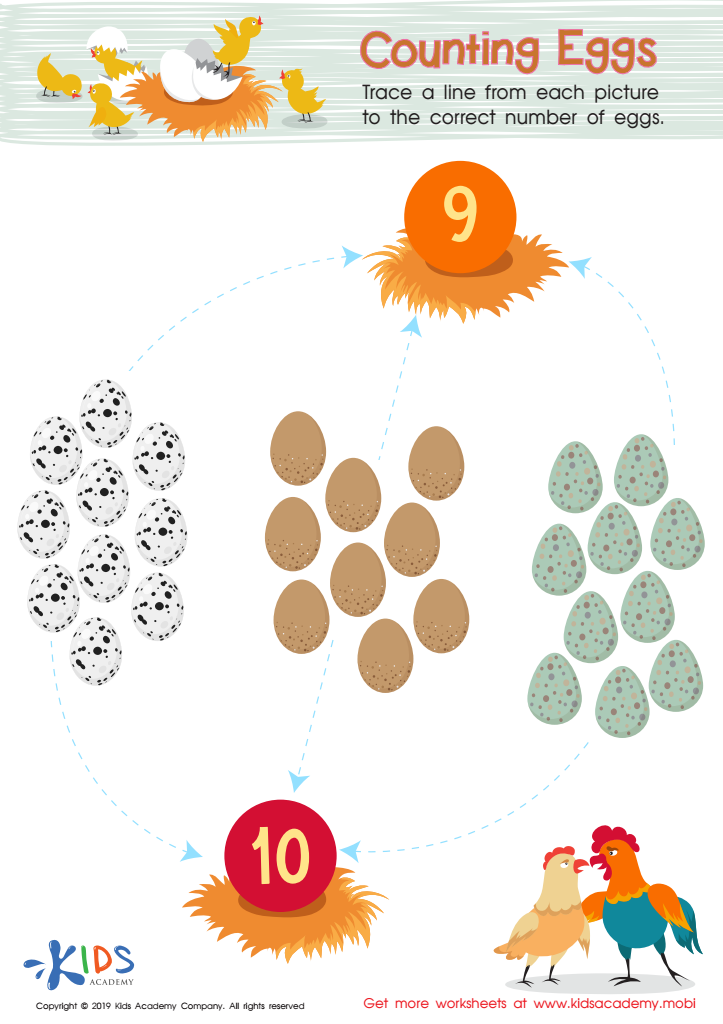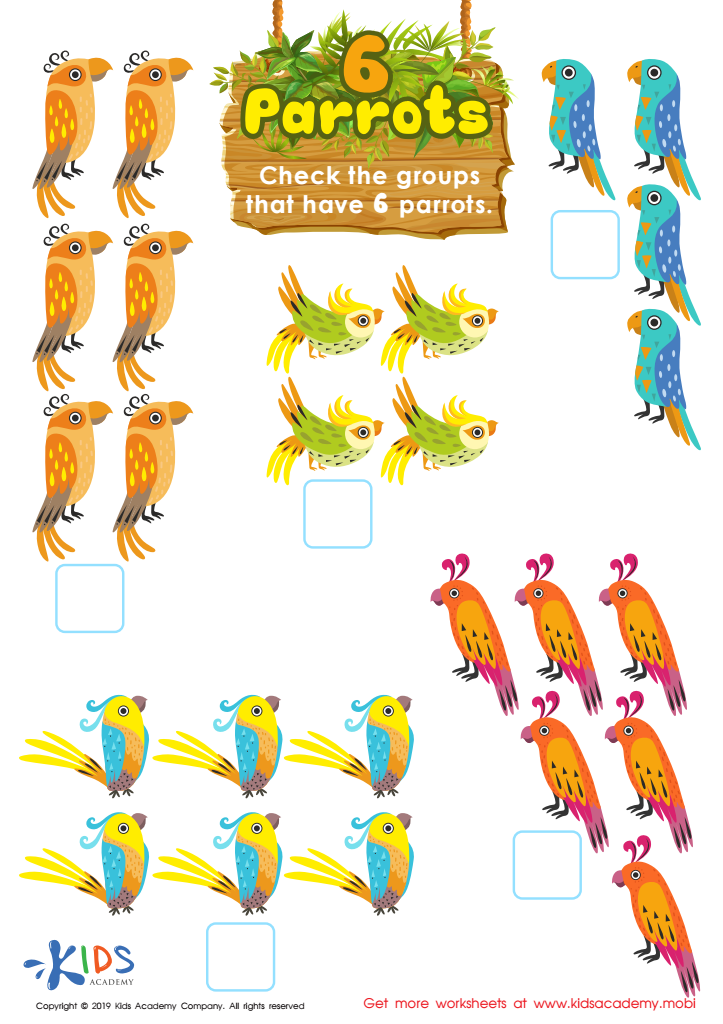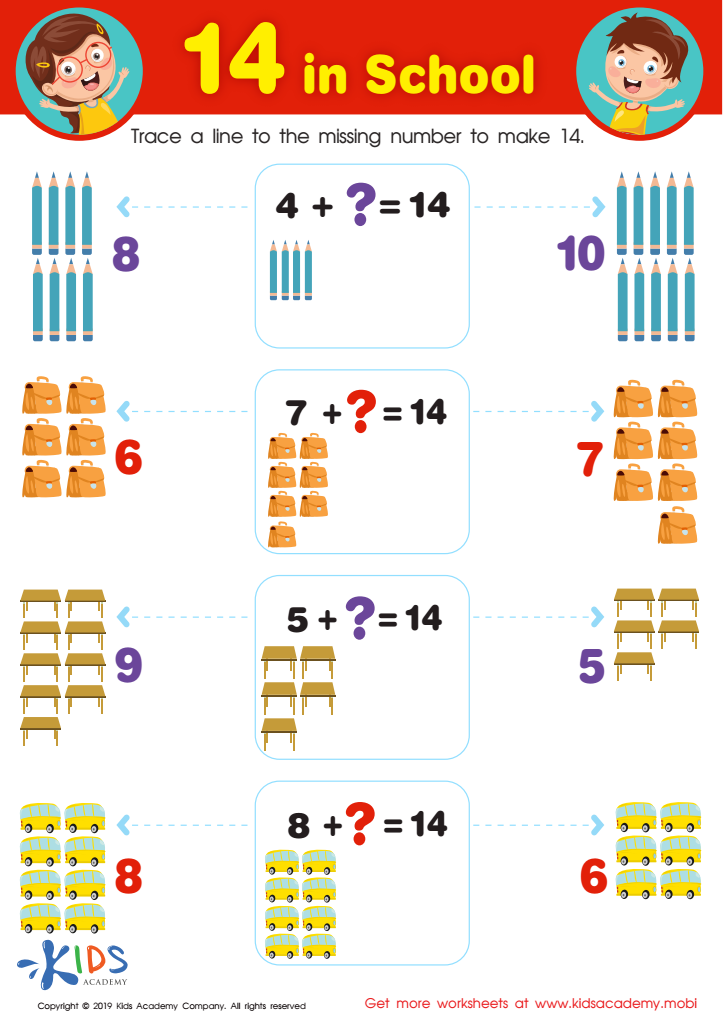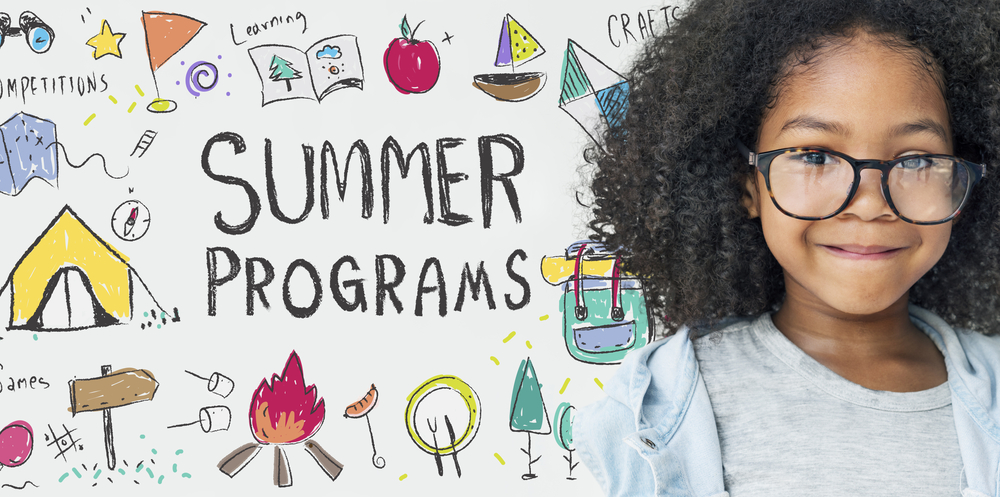Color Identification Addition & Subtraction Worksheets for Ages 3-6
5 filtered results
-
From - To
Introduce your young learners to the magic of math with our "Color Identification Addition & Subtraction Worksheets for Ages 3-6." Perfectly crafted to engage and educate, these printable worksheets seamlessly blend basic math skills with fun color recognition tasks. Each page is designed to simplify addition and subtraction challenges, making arithmetic concepts easy and entertaining. Kids will delight in identifying and coloring objects as they solve problems, cultivating both their mathematical and artistic skills simultaneously. Ideal for preschool and kindergarten, our worksheets are tailored to build foundational knowledge and instill a love for learning math early on.


Load up to 15 Worksheet


Counting Eggs Worksheet


6 Parrots Worksheet


14 in School Worksheet


Missing Number: Monster Math Worksheet
Color Identification, Addition, and Subtraction activities serve as foundational building blocks essential for the cognitive and academic development of children aged 3-6. These formative years are critical for brain development, where children acquire basic skills that will shape their future learning experiences.
First and foremost, color identification helps enhance memory, attention, and visual perception skills. Recognizing and naming different colors is one of the earliest forms of categorization, a key cognitive skill that aids in organizing and interpreting information. It also paves the way for better language development as children learn to associate words with objects and properties.
Addition and subtraction, in turn, introduce children to numeracy, establishing an understanding of numbers and basic arithmetic operations. These skills are not only fundamental for math but also enrich problem-solving and logical thinking abilities. By integrating these skills into engaging activities, teachers and parents can create a fun and stimulating learning environment.
Combining these skills—through colorful visual aids, storytelling, and interactive games—ensures that young learners find joy in education. It helps them become confident in their abilities and encourages a positive attitude toward future learning experiences, crucial for academic success and lifelong curiosity. Therefore, dedicated attention to such activities is crucial for holistic child development.
 Assign to My Students
Assign to My Students















